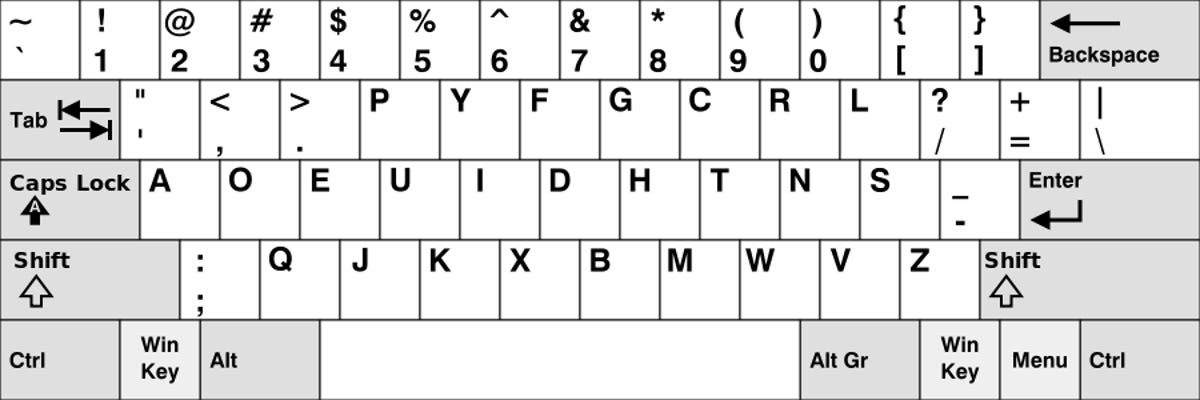
Sarah Jacobsson Purewal/CNET
The standard QWERTY keyboard layout may not actually be your friend.
According to popular legend, the QWERTY keyboard was created in the 1860s by a man named Christopher Latham Sholes in response to a very specific problem: Early typewriters jammed up when they were used too quickly, and so a special inefficient keyboard layout had to be designed. In other words, QWERTY is designed to make you a slower, clumsier typist.
Of course, this story may just be a legend, just like the supposed superiority of certain alternative keyboard layouts may be a myth. But even if QWERTY wasn’t designed to slow you down, let’s take a look at the facts: the fastest English typist on record, Barbara Blackburn, didn’t use QWERTY to set her world record of 212 wpm. So maybe you shouldn’t use it, either.
Looking to up your typing game? Here are a couple of English keyboard layout alternatives you can get started with right now:
Dvorak


The Dvorak Simplified Keyboard, which was patented in 1936 by August Dvorak and William Dealey, is probably the most popular alternative keyboard layout — in fact, it’s what Blackburn used to set her world record. The Dvorak keyboard is designed to reduce finger movement by moving popular letters, such as vowels, to the home row. With Dvorak, you don’t have to move your fingers as frequently to type out common words — 70 percent of your typing is done on the home row (only 32 percent of typing is done on QWERTY’s home row).
You can switch to Dvorak right now, if you want — all major operating systems come with the Dvorak layout built in, you’ll just need to activate it. But it’s not incredibly easy to switch, since the layout is completely different (in the original version of Dvorak, even the number keys were laid out differently).
Colemak


Colemak
If switching to Dvorak is too daunting, you may want to check out Colemak, an alternative keyboard layout that’s more efficient but closer to QWERTY. The Colemak keyboard shares some keys with QWERTY (including ‘Q,’ ‘W,’ ‘C,’ and ‘B,’), but puts more common letters on the home row (including four of the five vowels). Colemak is a good choice for people who frequently use keyboard shortcuts, because ‘Z,’ ‘X,’ ‘C,’ and ‘V,’ are in the same place as they are in QWERTY.
Colemak is supported on Mac OS X and Linux (as well as iOS and Android), but Windows users will need to download it separately.
Dvorak one-handed


OK, so a one-handed keyboard is unlikely to make you more efficient overall. But for people who appreciate the convenience of having a hand free (or who have only one hand), Dvorak comes in one-handed versions for both the left and right hand. As you might expect, in the one-handed Dvorak keyboards, the letters are more condensed toward the middle of the board, utilizing all four rows (including the number row), while numbers and punctuation are relegated toward the edge of the keyboard.
What’s nice about the one-handed Dvorak layout is that you don’t actually need a special one-handed keyboard — it’s designed for your regular, full-size two-handed keyboard. You can find both the left-handed (LH) and right-handed (RH) Dvorak keyboard layouts in Windows.




